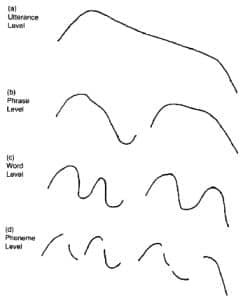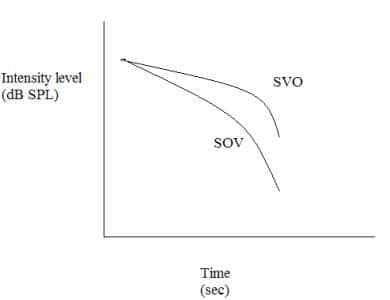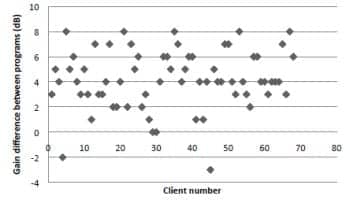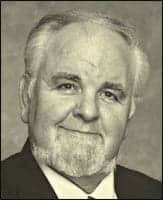Field study suggests that some languages would benefit from a slight boost in gain
This special section on Living Well with Hearing Loss, prepared by Ida Institute faculty members, focuses on the delicate balance that exists in shifting traditional patient-counseling techniques to a more patient-centered, health—behavior change approach.
Of the approximately 6,400 languages spoken in the world, only about 4% of them are spoken by the vast majority (96%) of people. In an ever increasing multicultural and multilingual environment, it is necessary to investigate the similarities and differences among the various commonly spoken languages and how this may affect hearing aid specifications.
Whenever one thinks about language, three elements typically come to mind:
- The phonetic inventory of sounds
- The phonology (or [morpho]phonemics); and
- The syntax or grammar.
Briefly, the phonetic inventory is a listing of those possible sounds spoken in a language—one language may have more vowels or different vowels than another. This has ramifications for setting the frequency response of a hearing aid.
The phonology is the sound patterns of a language and refers to which of the sounds carry meaning. For example, in English, most of the higher frequency phonemes carry much of the clarity. This also has ramifications for setting the frequency response of a hearing aid and unlike the first element, phonetic inventory, will be observed on the speech intelligibility index (SII) for a particular language.
The third element, syntax, as far as hearing aid fittings are concerned, refers to the word order and whether the ends of sentences in certain languages are quieter (eg, compared to English). This has ramifications for whether more gain may be required in these languages than for English when it comes to the setting of gain for soft level inputs.

Table 1. The SII can only provide information on phonological (phonemic) parameters but provides no information relative to the syntax of the language. SII changes are typically frequency response changes
Table 1 shows which linguistic parameters can and cannot be observed on the SII. More information on the phonetic inventory and the phonology of some commonly spoken languages can be found in Chasin,1,2 as well as in the author’s October 2008 podcast interview with HR Editor Karl Strom.3
The study detailed in this article focuses on those linguistic parameters that cannot be found on an SII. The SII is a very important tool, but is only part of the answer regarding setting hearing aids differently for different languages. Some manufacturers offer different program formulae for different languages, but these are generally based on the SII of the language in question and typically will only result in frequency response changes.
As a sentence is uttered, due to our limited lung volume, one gradually runs out of air. This, of course, is a human trait and is language independent. In languages such as English that have a Subject-Verb-Object word order, a saving grace is that sentence final elements tend to be more intense, especially if the sentence final element is a noun (object). Nouns tend to be more intense than non-nouns, such as prepositions, adjectives, and verbs. The sentence final noun tends to locally increase the intensity such that sentence final elements are more audible and require less gain than would otherwise be the case. This is shown stylistically in Figures 1a and 1b.

Figure 1a. Hierarchical levels of fundamental frequency (adapted from Sagisaga, 19904). This shows the relative drop in intensity over time frames at all levels of an utterance.

Figure 1b. Stylized decrease in speaking intensity as the end of a sentence is approached for both a subject-verb-object (SVO) language, such as English, and a subject-object-verb (SOV) language, such as Hindi or Japanese.
Many of the languages that are encountered in our clinical practices are Subject-Verb-Object (SVO) word order languages. These include English, Russian, German, Chinese, French, Spanish, and Portuguese, to name a few. In contrast, there are many clients whose first (or second) language is Hindi, Urdu, Japanese, Korean, Iranian, or Turkish. In these languages (and many others, such as in the Altaic language family and the Indo-Iranian sub-branch of Indo-European), the word order in a sentence is Subject-Object-Verb (SOV).
Sentence final verbs are not nearly as intense as sentence final nouns (objects), and as such, the research hypothesis is that more gain would be required for SOV languages for soft level inputs (ie, sentence final sounds) than for SVO languages, for sufficient audibility. It is hypothesized that, for languages with a SOV word order, hearing aid changes should be increased in gain for soft level inputs (or equivalently a decrease in the threshold kneepoint or TK setting of the hearing aid).
Figures 2a-b show spectral analyses and time domain data for an English sentence (2a) and a similar Korean sentence (2b) that demonstrates this sentence final difference between the two languages.

Figure 2a. English: “My mother is at home” (S-V-O).

Figure 2b. Korean: “A pretty picture is hanging on the wall” (S-O-V).
Method
A clinical study was undertaken to analyze this phenomenon in detail. Digital recordings were made of cold running speech for four languages with a SOV word order. This included recordings for Hindi-Urdu (considered linguistically to be the same language but differing writing systems), Turkish, Japanese, and Korean.
In all cases, the client with hearing impairment, who was about to be fit with hearing aids in a clinical practice, had one of these four languages as their first language but spoke English as a second (or third) language. Once fit with appropriate amplification based on English (Program 1), the clients listened to cold running speech of their other language and self-adjusted (in Program 2) the amount of gain for soft level inputs. In this way, each client served as their own control.
The clients were then asked to redo this same task for English and then again for their SOV language. If there was greater than a 3 dB difference for their adjustment for the English language, then that second setting was chosen for comparison over that which was initially set. The amount of selected gain at 2000 Hz was recorded for each client and was calculated as the difference between the amount of gain for soft level inputs between Program 1 and Program 2.
In total, 68 people were assessed using this paradigm, with the majority having mild sloping to moderate or mild to moderately severe sloping sensorineural hearing losses. Preliminary (pilot) unpublished data suggests that the language was not a factor as long as they shared the same syntactic SOV structure. As such, all data were collapsed and treated together.

Figure 3. For all 68 clients, the difference is shown between the amount of gain for soft level inputs while listening to English (SVO) versus listening to their other SOV language. A positive dB value indicates that the amount of gain for soft level inputs for the SOV language was greater than for English (SVO).
Results
Figure 3 shows the data for the 68 clients exhibiting the differences for the amount of gain desired for soft level inputs between English (SVO) and their other SOV language. Since each client served as their own control and only differences were analyzed, factors such as amount of gain, as well as many individual and hearing aid-related factors, were minimized. The data achieved statistical significance at the 0.01 level (p<0.001) with a 95% confidence interval of 3.62-4.75 (average 4.19, SD 2.33). Statistically, a paired comparison (ie, a generalized paired t-test) was utilized with appropriate standard deviations.
Taken together for all 68 clients, at the 0.01 level of significance, there was a preference for 4.2 dB more amplification for soft level inputs in the SOV language than for English (a SVO language). This is significant evidence that the null hypothesis of “no differences between language syntactic type” is rejected.
Discussion
This experiment shows only preliminary results, but indicates that clients appear to prefer slightly more gain (4.2 dB) for soft level inputs while listening to those languages that have a lower intensity at the end of a sentence (ie, SOV languages). This is consistent with the hypothesis that sentence-final audibility is a factor and should be taken into account during a non-English hearing aid fitting for those languages that do not have nouns (or equivalently intense elements such as pronouns) in or near a sentence final position.
The difference in desired gain for soft level inputs is not a hearing aid fitting parameter that would show up on an SII measure or even those non-English fitting formulae supported by many manufacturers, assuming that they are based only on a language-specific SII.
It should be pointed out that this study has some inherent limitations. Ideally, each client should have been allowed to make more adjustments while listening to cold running speech, but this experiment was performed in conjunction with a routine clinical hearing aid fitting. In addition, there may be interactions between other hearing aid settings or even as a function of type or configuration of hearing loss. Another drawback that limits the utility of this experiment is that the available hearing aids had slightly differing amounts of adjustment for the gain for soft-level inputs, as well as to which frequency range(s) these adjustments would apply.
If, indeed, it is shown that people who listen to languages with a SOV word order require more gain for soft level inputs—which is an issue of audibility—hearing aids should be made available to have an extended ability to provide gain for soft level speech over a wider range than is typically commercially available.
References
- Chasin M. How to set hearing aids differently for different languages. Hearing Review 2008;15(11):16-20.
- Chasin M. Setting hearing aids differently for different languages. Seminars in Hearing. 2011;32(2):182-188.
- What is “Audiolinguistics”? Podcast interview with Marshall Chasin, AuD, by HR Editor Karl Strom. October 30, 2008. Accessed August 3, 2011.
- Sagisaga Y. Speech synthesis from text. IEEE Communications Magazine. 1990;28(1):35-41,55.
Correspondence can be addressed to HR or Marshall Chasin, AuD, at .
Citation for this article:
Chasin M. How much gain is required for soft-level inputs in some non-English languages? Hearing Review. 2011;18(10):10-16.






